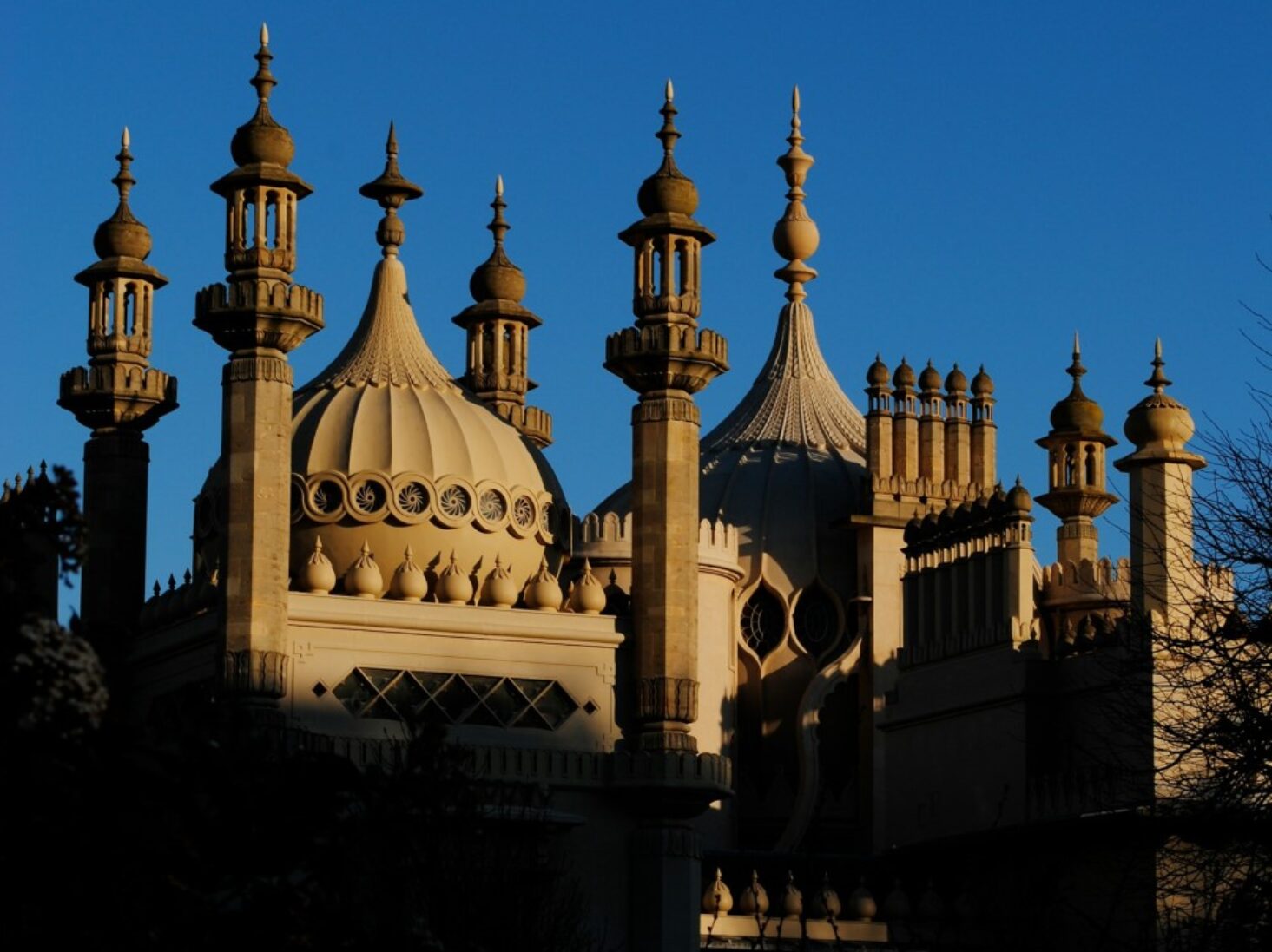
The Best Brighton Attractions for Architecture Lovers
Brighton, known for its vibrant culture and stunning coastal views, is a haven for architecture lovers seeking to explore its rich architectural heritage. From historic landmarks to modern marvels, the city boasts a diverse range of architectural wonders that showcase its unique character and charm. Whether you’re fascinated by Victorian-era buildings or contemporary designs, Brighton offers a plethora of attractions that will captivate your imagination and leave you in awe.
One of the must-visit destinations for architecture enthusiasts in Brighton is the iconic Royal Pavilion. This extravagant palace, with its distinctive Indo-Saracenic architecture, is a testament to the city’s regal past and is renowned for its opulent interiors and exquisite details. A stroll through the Royal Pavilion Gardens offers the perfect opportunity to admire its stunning facade and lush surroundings.
For those interested in more contemporary architecture, the British Airways i360 is a must-see attraction. This futuristic observation tower, designed by architect David Marks, offers panoramic views of the city and the English Channel from its glass viewing pod. It’s a striking example of modern design and engineering excellence, making it a popular spot for architecture enthusiasts and tourists alike.
Another architectural gem worth exploring is the Brighton Dome, a cultural hub housed within a historic concert hall and estate. Designed by renowned architect John Nash, the Brighton Dome boasts a unique blend of Regency and Victorian architecture and is home to a variety of arts and entertainment events throughout the year.
In addition to these iconic landmarks, Brighton is also home to a plethora of hidden architectural gems waiting to be discovered. From charming Georgian townhouses to elegant Regency squares, the city’s streets are lined with architectural treasures that offer glimpses into its fascinating history and heritage.
Whether you’re planning a leisurely stroll through the city or embarking on a guided tour of its architectural highlights, Brighton promises to delight architecture lovers with its eclectic mix of old and new. So, grab your camera and prepare to be inspired as you explore the best Brighton attractions for architecture lovers.
The Royal Pavilion
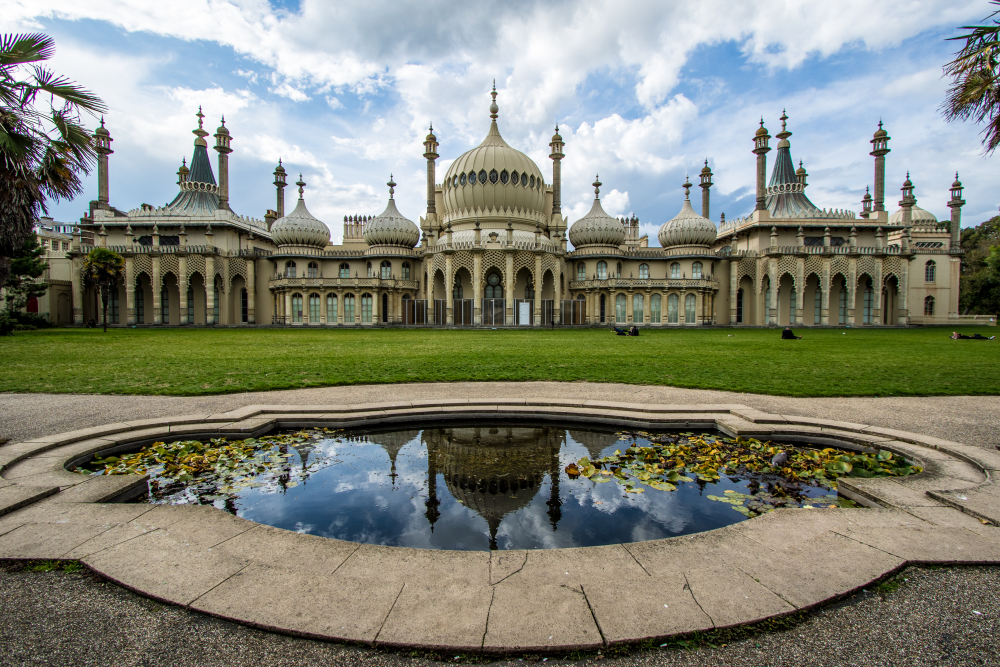
The Royal Pavilion in Brighton, UK, is an esteemed attraction that showcases the magnificent architecture of the Regency period. This impressive building combines Indian architecture with Chinese influences, featuring domes, minarets, and intricate detailing that captivates visitors.
Constructed in the early 19th century as a coastal retreat for King George IV, the Royal Pavilion underwent expansions and renovations to become the splendid palace it is today. Inside, visitors can explore the luxurious Banqueting Room, the opulent Saloon, and the exotic Music Room, all adorned with exquisite decorations and furnishings.
Surrounding the Royal Pavilion are enchanting gardens with abundant greenery, adorned pathways, and picturesque landscapes, offering a tranquil escape from the city. Throughout the year, the Royal Pavilion hosts a variety of events and exhibitions showcasing art, history, and culture. Visitors can participate in guided tours, attend lectures, or enjoy live performances to enrich their experience.
By visiting the Royal Pavilion, you can immerse yourself in the elegance and grandeur of a bygone era. Whether you admire its architectural wonders, delve into its rich history, or simply enjoy the peaceful surroundings, the Royal Pavilion provides an unforgettable experience.
Brighton Palace Pier
Brighton Palace Pier is a must-visit for architecture enthusiasts in Brighton. It was originally built in 1899 and showcases beautiful Victorian architecture. As you stroll along the pier, you will be captivated by its intricate ironwork and elaborate details.
The pier offers a variety of activities for visitors. You can take a leisurely walk and enjoy the sea views or try your hand at arcade games. For those seeking excitement, there are thrilling rides available.
Brighton Palace Pier provides a delightful sensory experience. Indulge in the delicious treats on offer, from traditional fish and chips to refreshing ice cream. Immerse yourself in the vibrant atmosphere while enjoying the sights, sounds, and flavors.
Pro-tip: Be sure to visit the pier during sunset for a truly magical experience. The sun reflecting off the pier’s architecture creates a picturesque backdrop. Capture the moment and create lasting memories.
If you are an architecture enthusiast visiting Brighton, make sure to include Brighton Palace Pier in your itinerary. Immerse yourself in its stunning Victorian design, enjoy the activities, and treat yourself to the pleasures of the seaside.
The Lanes
The Lanes in Brighton is a lively and historic area that provides a distinctive shopping and dining experience. Here are some reasons why every admirer of architecture should visit:
- Architecture: The Lanes showcases a combination of architectural styles, including Tudor, Georgian, and Victorian buildings, creating a delightful blend of old-world charm and contemporary design.
- Unique Boutiques: The Lanes is home to independent boutiques located in historic buildings. Explore the narrow pathways to discover vintage clothing stores, antique shops, and artisanal craft boutiques.
- Traditional Pubs and Cafes: Take a break at one of The Lanes’ traditional pubs or cozy cafes after a day of exploration. Enjoy local ale or treat yourself to a delicious afternoon tea while immersing yourself in the delightful surroundings.
- Jewellery Quarter: The Lanes is an essential destination for jewelry enthusiasts. It features a dedicated Jewellery Quarter with unique and exquisite jewelry shops, offering one-of-a-kind pieces crafted by talented local artisans.
Pro-Tip: To avoid crowds and fully appreciate the tranquillity of this historic area, visit The Lanes on weekdays or early in the morning. It is the perfect time for capturing photographs and exploring the hidden treasures tucked away in the alleyways.
Brighton Dome
Brighton Dome is a well-known architectural landmark in Brighton, UK. This structure is located in the heart of the city and possesses significant historical and cultural importance.
- Originally named the Royal Pavilion Concert Hall, The Dome was built in 1805 as part of the extensive Royal Pavilion Estate. Architect William Porden designed it in a neoclassical style, featuring a copper dome in the shape of an onion.
- Throughout its history, The Dome has served various purposes. Initially, it functioned as a concert hall for George IV, who used the Royal Pavilion Estate as a summer retreat. Later on, it acted as a military hospital during both World War I and II, accommodating injured soldiers.
- Currently, Brighton Dome is a versatile arts venue that hosts a diverse range of events, including concerts, theatre productions, dance performances, and art exhibitions. The main Concert Hall has a seating capacity of up to 1,700, providing a splendid backdrop for unforgettable performances.
- Visitors to Brighton Dome can also explore the Corn Exchange and the Studio Theatre, which offer smaller performance spaces. This venue attracts both local and international artists, contributing to Brighton’s vibrant cultural scene.
- Brighton Dome is not only architecturally impressive but also deeply rooted in history. It serves as a testament to Brighton’s rich cultural heritage and continues to be a significant hub for artistic expression in the city.
During World War II, Brighton Dome played a crucial role in the war effort. Due to its coastal location and the risk of enemy bombings, the Dome was converted into an air-raid shelter, offering protection to local residents.
It provided a safe haven during air raids, accommodating hundreds of people seeking shelter. The strong construction of the Dome ensured the safety of those inside, becoming a symbol of resilience and unity during challenging times.
Komedia Brighton
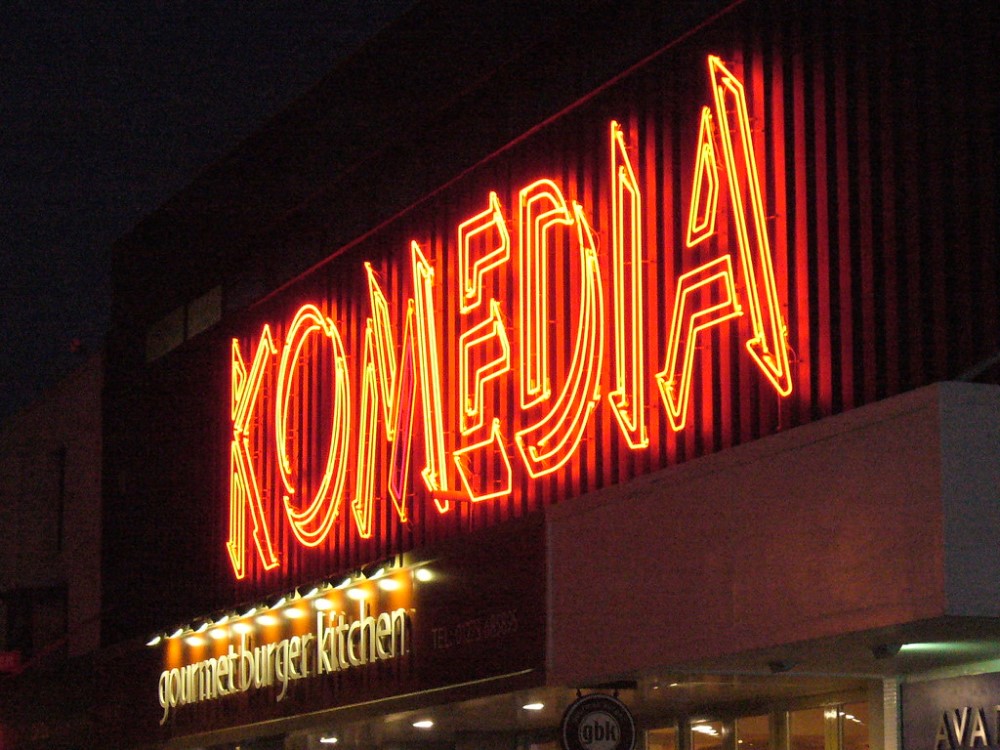
Komedia Brighton is a well-liked comedy club and entertainment venue in Brighton. It provides a lively environment for locals and tourists.
1. Comedy shows: Komedia Brighton hosts exceptional comedy shows featuring established and emerging comedians. Enjoy talented performances and plenty of laughter.
2. Live music events: Alongside comedy shows, Komedia Brighton also hosts live music events showcasing various genres such as rock, indie, and jazz. Talented musicians perform in this fantastic venue.
3. Variety of entertainment: Komedia Brighton offers a diverse range of entertainment options, including theatre productions, cabaret performances, film screenings, and club nights. There is always something exciting happening at Komedia.
4. Food and drinks: Komedia Brighton has a well-stocked bar and a delicious menu with a wide selection of food choices. You can indulge in a complete evening of entertainment.
In addition to Komedia Brighton, Brighton offers other attractions for architecture enthusiasts. Notable places include the Royal Pavilion, an exquisite example of Indo-Saracenic architecture, and the Brighton Palace Pier, a historic pier blending Victorian and modern architecture.
Don’t miss the chance to explore the Regency squares and crescents like Brunswick and Adelaide, which showcase the architectural style of the Regency era. Take the time to appreciate the modern architecture of Brighton Marina’s vibrant waterfront development. Marvel at the architectural beauty that Brighton has to offer.
The Bandstand
The Bandstand in Brighton is a historic and culturally important attraction. Having a history dating back to the 1800s, it has evolved into a central point for open-air concerts and social gatherings. The Bandstand showcases Brighton’s architectural legacy with its distinctive circular shape and intricate detailing.
It offers stunning views of the coastline and serves as a picturesque backdrop for various events. Throughout the year, the Bandstand hosts a diverse range of musical performances, including classical orchestras and contemporary bands.
The outdoor setting and acoustics of the Bandstand enhance the musical experience. Whether you appreciate history, love music, or simply want to soak up the lively atmosphere, the Bandstand is an attraction in Brighton that should not be overlooked. Immerse yourself in Brighton’s rich cultural heritage and experience the enchantment of the Bandstand.
Brighton Marina
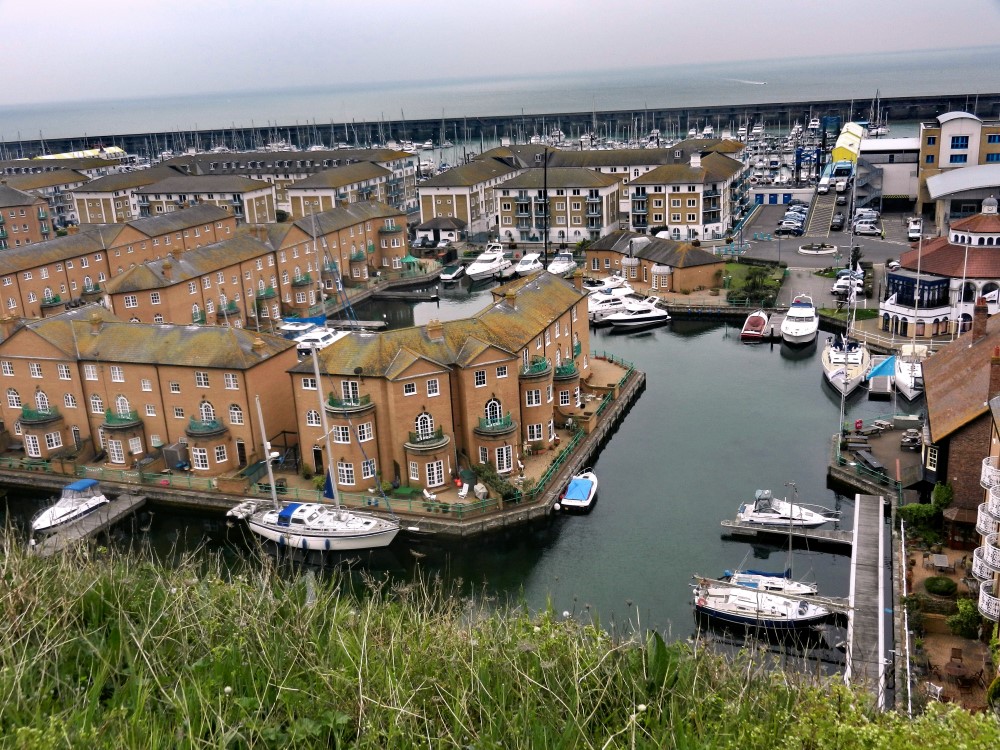
Brighton Marina, situated on the east side of the city, is a lively centre for both locals and tourists. It offers a wide range of activities, entertainment, and dining options, making it an essential place to visit in Brighton.
One of the main highlights of Brighton Marina is its breathtaking waterfront views. Visitors can take a leisurely stroll along the marina and appreciate the scenery of the bobbing boats and colourful buildings.
For those who love shopping, Brighton Marina has a variety of shops, ranging from fashionable boutiques to specialty stores. You can find clothing, accessories, souvenirs, and gifts. Whether you’re looking for trendy fashion or locally crafted items, Brighton Marina caters to everyone’s tastes.
When it comes to dining, the marina provides a diverse range of restaurants and cafes. From international cuisine to traditional British dishes, there are countless options to satisfy every palate. Whether you desire seafood, Italian cuisine, or a hearty English breakfast, Brighton Marina has it all.
For entertainment seekers, Brighton Marina boasts a multi-screen cinema complex showcasing the latest blockbuster films. It also features an exciting casino where you can test your luck in games and have a thrilling night out.
Fun Fact: Brighton Marina, the largest marina in Europe, first opened its doors in 1978 and holds a rich history. With its abundance of activities and stunning views, it is a must-visit destination for anyone exploring Brighton.
Brighton Clock Tower
The Brighton Clock Tower is a significant feature in Brighton’s landscape.
It is located at the junction of North Street and Queen’s Road and has been a part of the city’s skyline since 1888.
Designed by architect John Johnson, the clock tower exemplifies Victorian architecture.
It showcases intricate detailing and a prominent clock face that has been keeping time for over a century.
The clock tower serves as a focal point for both locals and visitors, providing a picturesque backdrop for photographs and a convenient meeting spot.
Its central position offers panoramic views of the streets below.
In 2002, the clock tower underwent restoration to preserve its historical charm.
This involved repairing the clock mechanism and restoring ornate features.
The clock tower was constructed to commemorate Queen Victoria’s Golden Jubilee.
It has now become a cherished landmark representing the spirit and community of the city.
If you find yourself in Brighton, be sure not to miss the opportunity to admire the beauty and significance of the Brighton Clock Tower.
It is a piece of history that is well worth a visit.
The Old Steine
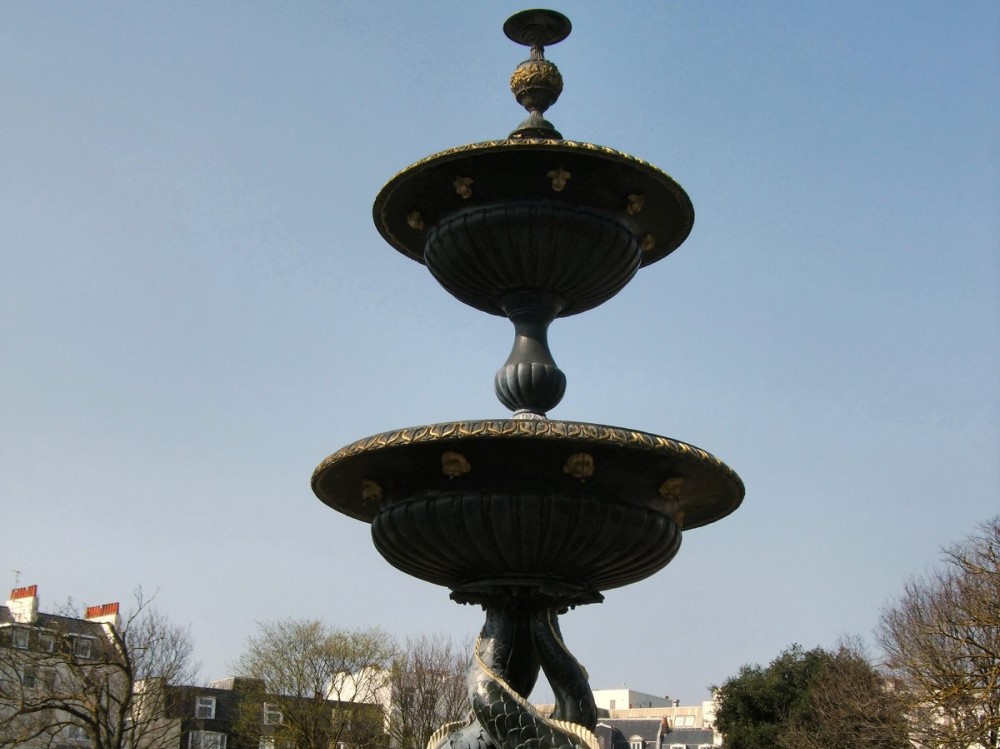
The Old Steine in Brighton is a prominent landmark. It is a historic square with elegant buildings and beautiful architecture. One notable feature is the central fountain, which is a popular meeting point for locals and tourists. The square is lined with trees and benches, creating a tranquil environment for relaxation.
The Old Steine has historical significance as it has witnessed various events and gatherings over the years. It has been the site of political rallies, cultural celebrations, and protests. Its rich history adds charm and makes it a must-visit for history enthusiasts.
Whilst visiting The Old Steine, take a leisurely stroll to admire the stunning architecture of the surrounding buildings. Nearby cafes and restaurants offer opportunities to sit, observe people, and enjoy coffee or a delicious meal.
Immerse yourself in the history and culture of Brighton by visiting The Old Steine. Whether you are interested in architecture or wish to experience the vibrant atmosphere, The Old Steine is a destination worth exploring. Do not miss this iconic square during your trip to Brighton.
What Makes Brighton’s Architecture Unique?
Brighton’s architecture is unique due to its combination of various styles, vibrant colours, and historical significance.
What makes Brighton’s architecture unique? Regency-style buildings are a prominent feature of Brighton’s architecture. They emerged in the early 19th century, displaying elegant proportions, intricate detailing, and stucco facades. The Royal Pavilion serves as an excellent example of Regency architecture, exhibiting Indian-inspired motifs and exotic interiors.
Victorian and Edwardian-era buildings also contribute to the distinctive nature of Brighton’s architecture. These buildings showcase ironwork, decorative tiles, and bay windows, adding charm to the streets. The North Laine and Brunswick Town areas house many of these gems, imparting character to the cityscape.
Brighton’s architecture also bears a strong Art Deco influence. The Embassy Court building exemplifies this style through its streamlined facades, geometric patterns, and bold materials. The British Airways i360 tower, with its sleek design and panoramic views, serves as a modern addition.
In addition to these styles, the city’s historic seafront and pier structures significantly shape the architecture. Iconic landmarks like the Brighton Palace Pier highlight the city’s Victorian seaside heritage and attract visitors. So, overall, the combination of Regency, Victorian, Edwardian, Art Deco, and seaside influences are what make Brighton’s architecture unique.
What Influences Can Be Seen in Brighton’s Architecture?
Brighton’s architecture is influenced by a variety of factors including historical periods, cultural trends, and its geographical location. The city showcases an array of architectural styles that highlight its rich heritage.
These influences can be seen in Brighton’s buildings, such as the Royal Pavilion. This stunning example of Regency architecture from the 18th and 19th centuries is characterized by its elegant and symmetrical facades, ornate detailing, and the use of stucco or cast iron.
During the Victorian era, Brighton experienced significant growth, resulting in the construction of Victorian-style buildings. These structures, like the notable Clock Tower, feature intricate brickwork, decorative details, and large windows.
In the early 20th century, Art Deco style left its mark on Brighton’s architecture. This influence is evident in the distinctive domed roof and Art Deco interior of the Brighton Dome. Bold geometric shapes, streamlined forms, and decorative motifs define this architectural style.
Brighton’s post-war redevelopment reflects modernist influence. Modernist buildings, exemplified by the iconic Brighton Marina, feature clean lines, functional designs, and the use of new materials and technology.
Due to its coastal location, Brighton’s architecture incorporates coastal and maritime elements. Nautical colors such as blues and whites, as well as the inclusion of piers and waterfront structures, contribute to the city’s unique architectural character.
Brighton’s architecture reflects its cultural diversity. From traditional English cottages to buildings with international influences, the city showcases a range of architectural styles that contribute to its distinctive charm.
Who Were Some Notable Architects in Brighton’s History?
Several architects have made significant contributions to the architecture of Brighton throughout history. John Nash, who is well-known for his work on the Royal Pavilion, displayed his exotic and extravagant style in its Indo-Saracenic design.
Amon Henry Wilds designed numerous Georgian and Regency buildings, including parts of the Brighton Pavilion and the Brunswick Estate, which greatly influenced the architectural character of the city in the 19th century.
Charles Barry, Jr. had a lasting impact with his design of the impressive Brighton Clock Tower, incorporating elements of Gothic Revival architecture.
Sir Reginald Theodore Blomfield‘s architectural style highlighted the Arts and Crafts movement in the beautiful Preston Manor.
These notable architects have left a significant architectural legacy in Brighton, shaping the city into the vibrant and visually appealing place it is today.
What Are Some Hidden Architecture Gems in Brighton?
Brighton is renowned for its stunning architecture. Although attractions such as the Royal Pavilion and Brighton Dome are well-known, there are also undisclosed treasures that architecture enthusiasts should explore.
One such hidden gem is the Regency Town House. This Georgian townhouse offers a glimpse into the architectural styles of the Regency period. Visitors can admire the plasterwork, furnishings, and architectural details that make this house a concealed treasure.
Stanmer House is another hidden gem. Situated in Stanmer Park, this Georgian mansion showcases impressive architecture and surrounding gardens. Visitors can appreciate the intricate detailing and craftsmanship involved in its construction.
Architectural enthusiasts should also make a point to visit the Preston Park Velodrome. This historic cycling track boasts a unique banked design and is one of the oldest velodromes in the world. The sleek lines and curves of the track make it a hidden architectural gem in Brighton.
The famous West Pier may no longer be standing, but its ruined remains still exhibit its grand architectural design. Visitors can witness the haunting beauty of the dilapidated structure and appreciate the elegance of its Victorian-era design.
The Church of St. Bartholomew is a hidden architectural gem in Brighton. This medieval church features stained glass windows, woodwork, and a vaulted ceiling. It serves as a peaceful sanctuary that showcases the craftsmanship of its era.





